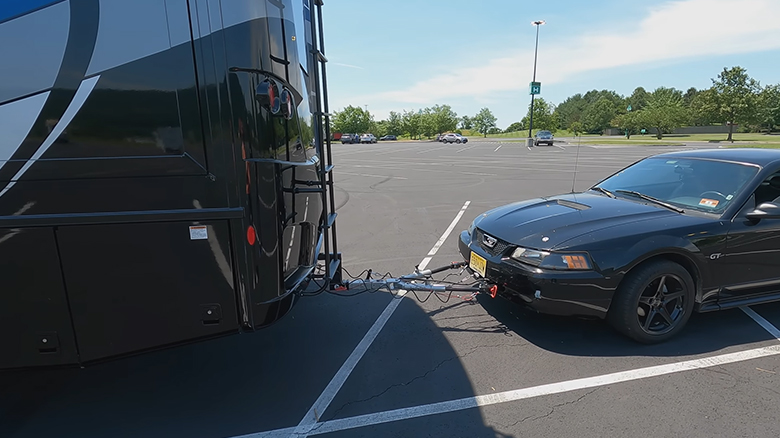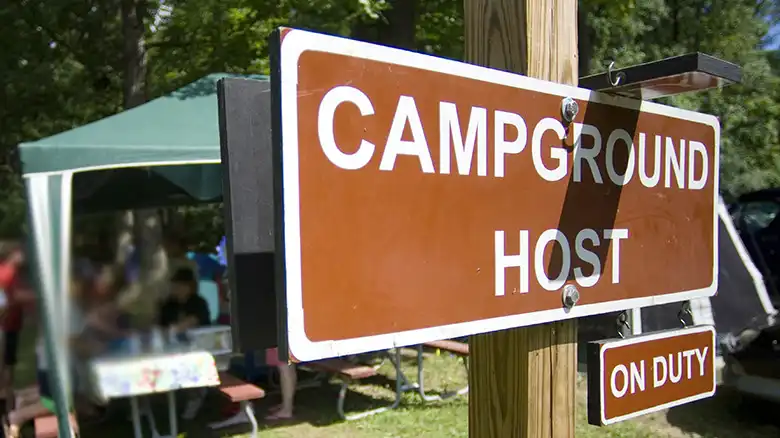Traveling across the country in an RV can be an amazing adventure. With a Class C motorhome, you’ll have all the comforts of home while exploring new destinations. But you may be wondering – can I also bring my car?
The short answer is yes – Class C motorhomes generally can tow vehicles like cars or small SUVs. However, there are important factors to consider regarding your specific motorhome’s tow rating capacity, tongue weight, and integrated towing equipment. So don’t shy away from the idea of towing your car or SUV behind a Class C – just be sure to assess your particular motorhome’s capabilities first. As we’ll explore in this article, Class C motorhomes can tow vehicles within certain weight limits, but real-world testing is advised before hitting the open road.

Understanding Class C Motorhome Towing Capacities
To understand if your Class C motorhome can tow a car, you first need to know its maximum towing capacity. Tow ratings differentiate one Class C model from another based on factors like:
Diesel and Gas Class C Motorhomes: Towing Capabilities
Both Diesel and Gas model Class C motorhomes are capable of towing up to 5,000 lbs. This type of motorhome is built with class 3 or 4 chassis. This kind of chassis can tow a maximum of 5,000 lbs. These are the affordable ones among the other types of Class C motorhomes.
What Makes Super Class C Motorhomes Stand Out for Towing?
Also sometimes called “Class C+”, super Class Cs bridge the gap between typical Class C and Class A luxury motorhomes. They often boast high-end amenities combined with top-notch towing capacities matching diesel trucks.
Semi chassis is used here and this chassis unlocks the towing limits upward of 25,000 pounds enabling pulling large 5th wheel RVs, multi-vehicle trailers, and more. The spacious, motorhome-style living quarters make super Class Cs ideal for extended trips with everything (vehicles included) required for comfort and convenience.
Key Factors That Affect Towing Capacity
While the above provides general tow rating ranges among Class C types, the specifics depend greatly on your actual RV’s chassis, engine, and components. Checking your motorhome’s manual is the best place to start when gauging max towing capacity.
Here are key factors to understand when it comes to safely determining how much your Class C motorhome can tow:
1. Gross Vehicle Weight Rating (GVWR)
A motorhome’s GVWR represents the maximum allowable combined weight of the RV itself, all cargo, passengers, fluids, and the towing tongue weight. Exceeding GVWR compromises vehicle control and component longevity.
Your RV manual should clearly specify its unique GVWR limit set by the manufacturer. When the fully loaded motorhome itself nears that number, it significantly reduces additional towing capacity.
For example, a Class C with a 15,000-pound GVWR likely permits around 3,500-7,500 pounds of towing capacity. But an ultra-heavy 25,000+ pound Class C may allow upwards of 14,000+ pounds to tow.
2. The Role of Tongue Weight in Towing Stability
The tongue weight rating denotes how much downward pressure your hitch can handle when connected to a towed trailer or vehicle. Too little tongue weight leads to instability due to trailer sway. Too much also poses challenges such as reduced steering responsiveness.
Tongue weight for towing a car usually falls between 10-15% of the vehicle’s total weight. For example, a 4,000-pound car would have an ideal 400-600-pound tongue weight. This must align with your particular hitch’s rating to allow proper control.
3. Essential Towing Equipment for Class C Motorhomes
A Class C motorhome’s factory-installed towing components (or lack thereof) can also determine realistic tow capacity. Standard hitches from brands like Blue Ox provide reliable short-term towing. But for frequent, heavy towing, upgraded aftermarket hitches are recommended for confidence.
The same applies to supplemental braking systems, adjustable mirrors for visibility, chassis modifications, and reinforced suspension, transmission coolers, and electrical connectors. Integrating the proper towing gear into your RV provides the safest, most optimal setup for towing within the motorhome’s limits.
Typical Weights of Different Vehicle Types
To ensure your Class C motorhome can safely tow a vehicle, you need to check whether the car’s weight remains within the RV’s rated towing capacity. Here’s a quick reference showing the average curb weights of popular categories of cars:
- Subcompact Cars
As you can see, most subcompact cars weigh between 2,000 to 2,800 lbs. A Class C with a 5,000+ lbs tow rating can easily tow them.
- Compact Cars
Compact cars have curb weights ranging from approximately 2,700 pounds to 3,300 pounds approximately. Most Class C motorhomes can tow compact cars without crossing weight limits.
- Midsize Cars
The curb weight of midsized cars ranges from approximately 3,100 pounds to 3,700 pounds. While some lightweight Class C motorhomes may struggle, most can tow a midsize car safely.
- Full-Size Cars
As evident from the stats above, full-size cars have curb weights from 3,300 pounds and going up to 4,600+ pounds. Towing them requires a capable Class C RV with higher tow ratings.
- Subcompact SUVs
Among subcompact crossovers, weights range between 3,000 to 3,800 pounds approximately. Light and mid-weight Class C motorhomes can tow them with ease.
- Compact SUVs
Compact SUV curb weights vary from 3,200 to around 4,200 lbs. While the lighter versions can be towed by most Class Cs, the heavier examples require an RV with a higher tow rating.
- Midsize SUVs
As you can see, midsize SUVs have curb weights ranging from around 4,000 pounds and going upwards of 5,000+ pounds. Towing them requires a sturdy Class C diesel motorhome.
- Full-Size SUVs
Full-size SUVs have curb weights from 5,300 pounds to 6,000+ pounds. Needless to say, towing them would require a Super Class C motorhome with GVWR exceeding 30,000 pounds and a high tow rating!
This summarizes the typical curb weights of popular passenger vehicles across different categories and sizes. Match the car you intend to tow with your RV’s rated towing capacity to ensure everything remains within safe GCW limits. Exceeding these limits can seriously impact vehicle control and braking performance.
Steps to Determine Your Class C’s Towing Capabilities
Determining whether your specific Class C motorhome can tow a car safely involves a simple 2 or 3-step process:
Step 1) Find out the tow rating or towing capacity of your RV model either from the user manual or the manufacturer’s website. This rating is typically given in pounds (lbs).
Step 2) Check the curb weight, gross weight, and tongue weight of the car you intend to tow. Ensure the car’s gross weight plus tongue weight is lower than the motorhome’s rated towing capacity.
Step 3 (optional): Weigh your fully loaded RV on a public scale to determine its current Gross Vehicle Weight (GVW). Make sure the combined GVW of the motorhome and car remains below the GCWR (Gross Combined Weight Rating) specified by the manufacturer.
As long as these weight and capacity figures check out, you’re good to tow your chosen car. Installing a compatible base plate kit, tow bar, electrical connectors, and supplemental braking system is then simply a matter of labor.
And voila, you’ll be all ready to tow your ride behind your stylish and versatile Class C RV for the ultimate road trip convenience!
Final Thoughts
The possibility and capacity to tow a passenger vehicle depends significantly upon the Class C motorhome’s type, chassis, engine size, etc. While lightweight diesel and gas Class C RVs can tow small cars like hatchbacks, sedans, and compact SUVs, towing a larger crossover will need a higher-rated diesel-powered coach.
The huge tow ratings of elite Super Class C coaches even permit towing a midsize SUV. Always double-check your particular RV’s towing capacity against the car’s weight figures before hitching up to stay safe and legal. We hope this guide gives you clarity on whether and how to tow a vehicle with your own Class C motorhome model!


